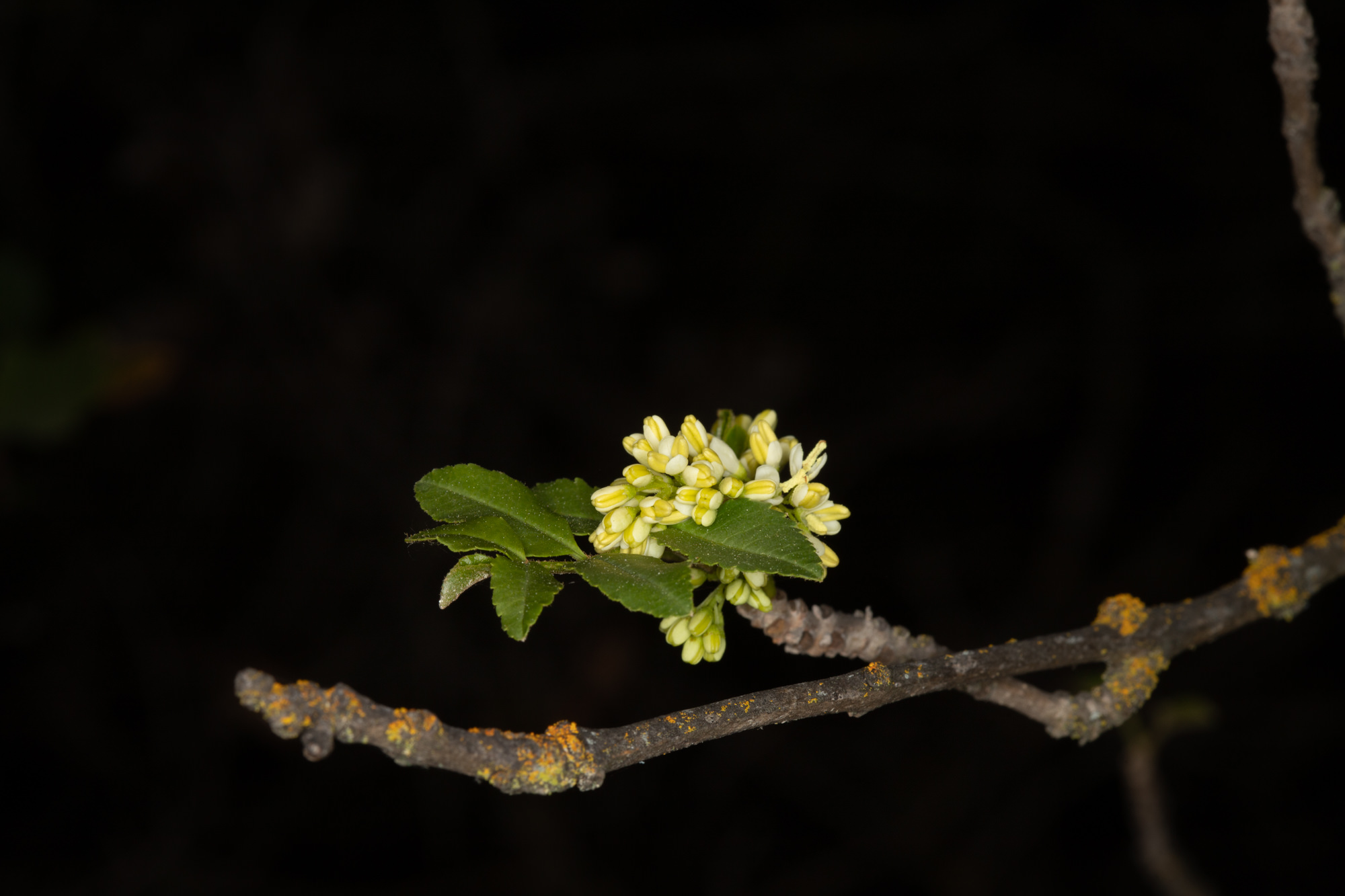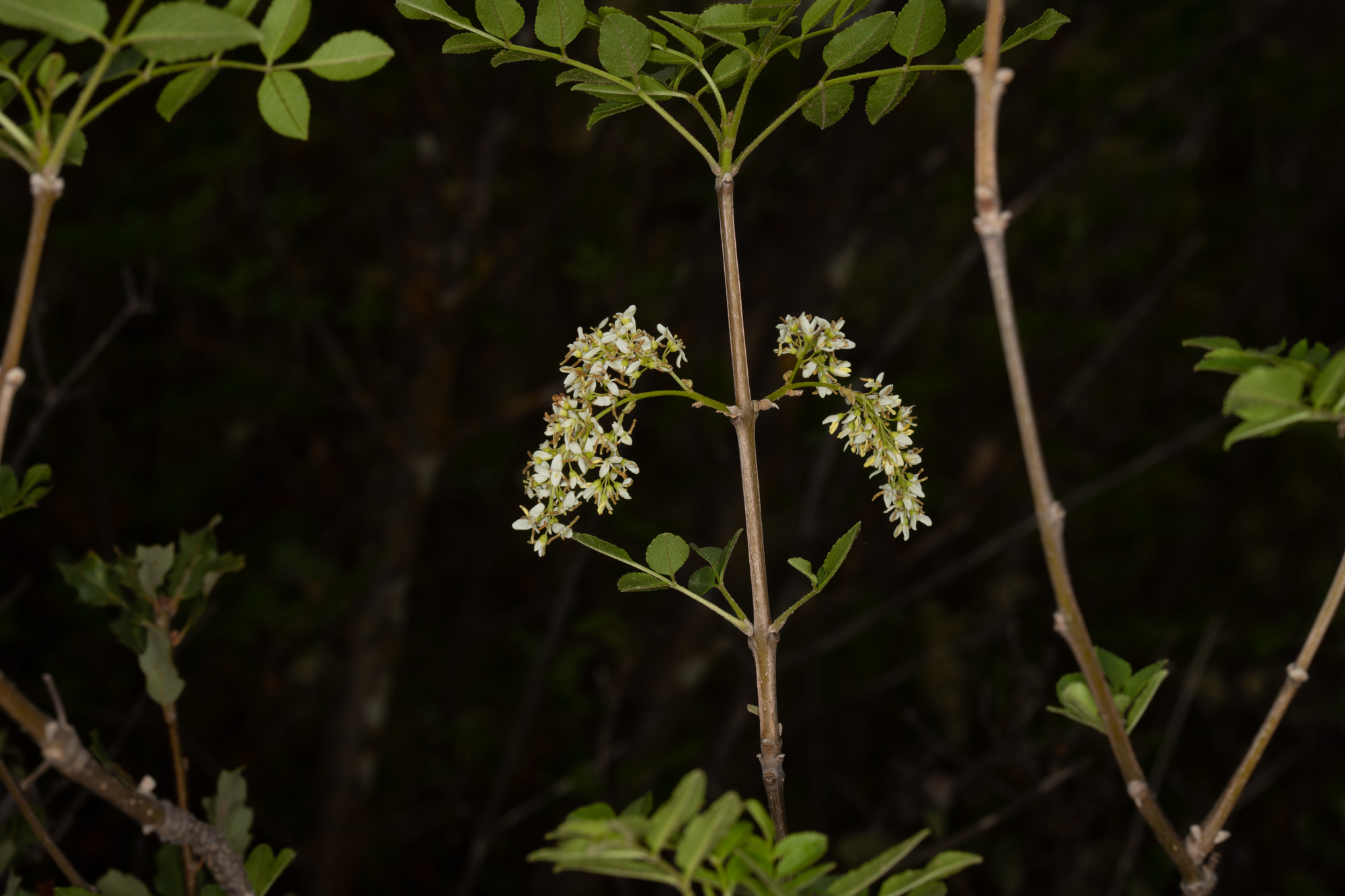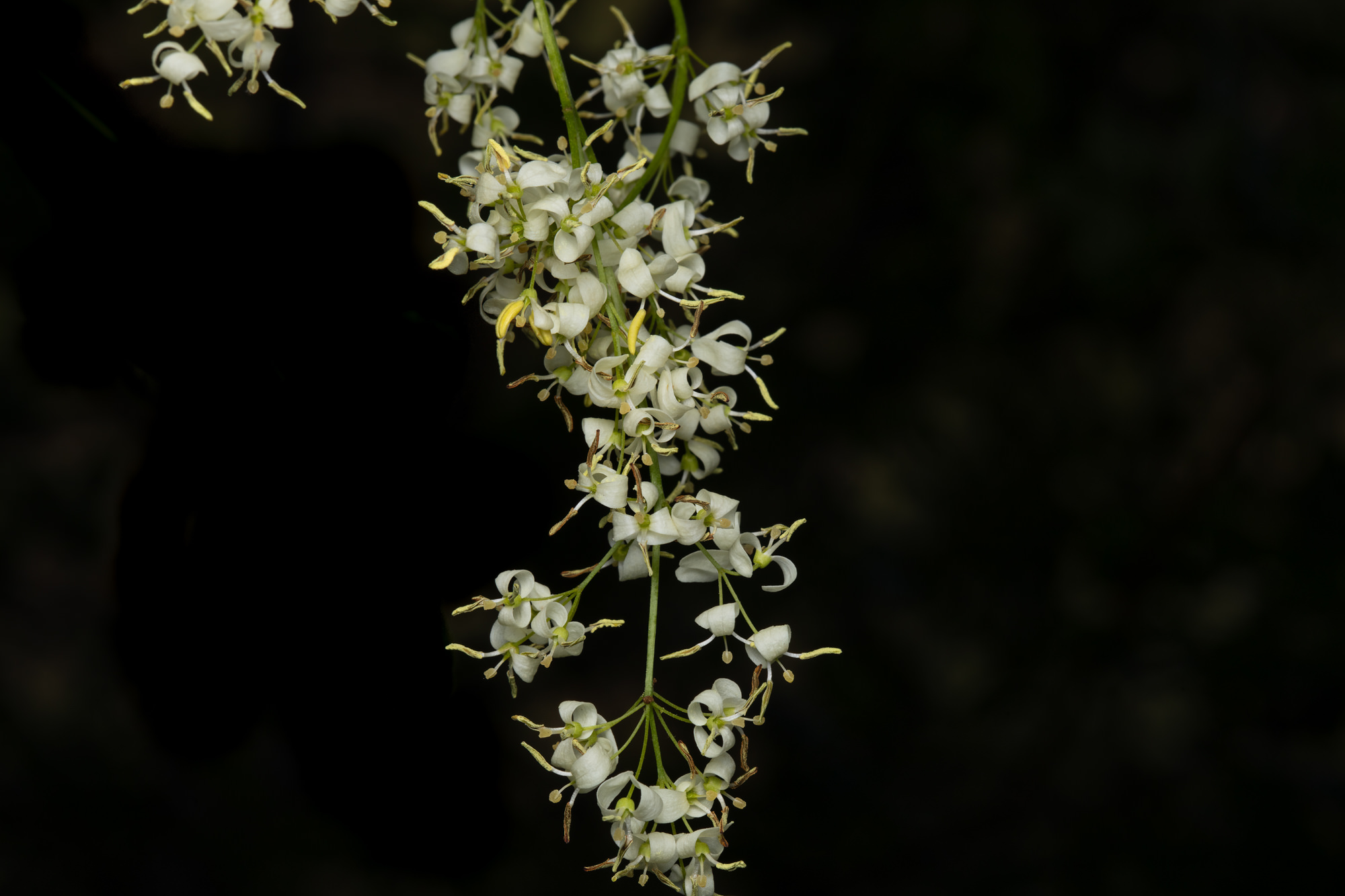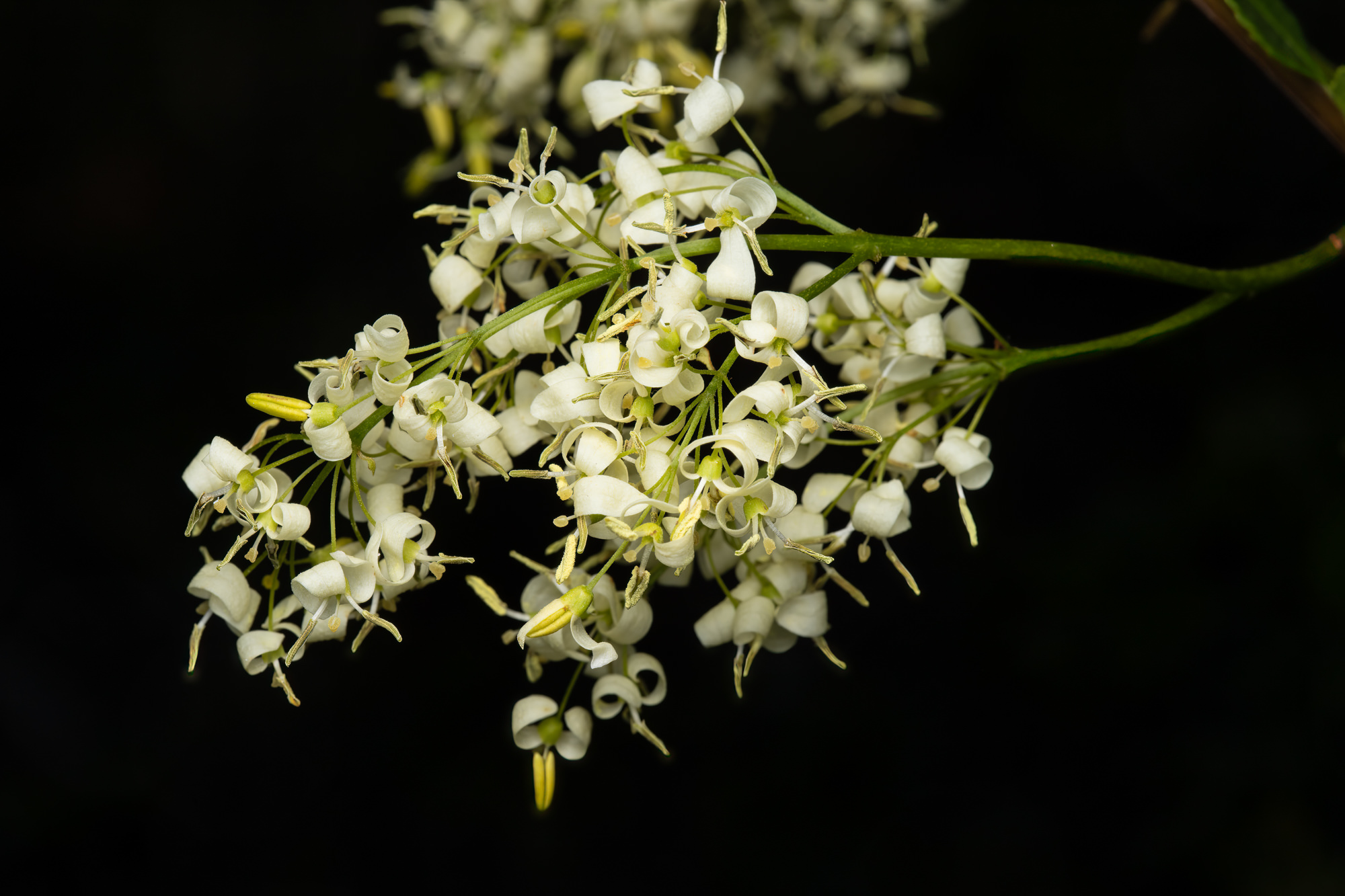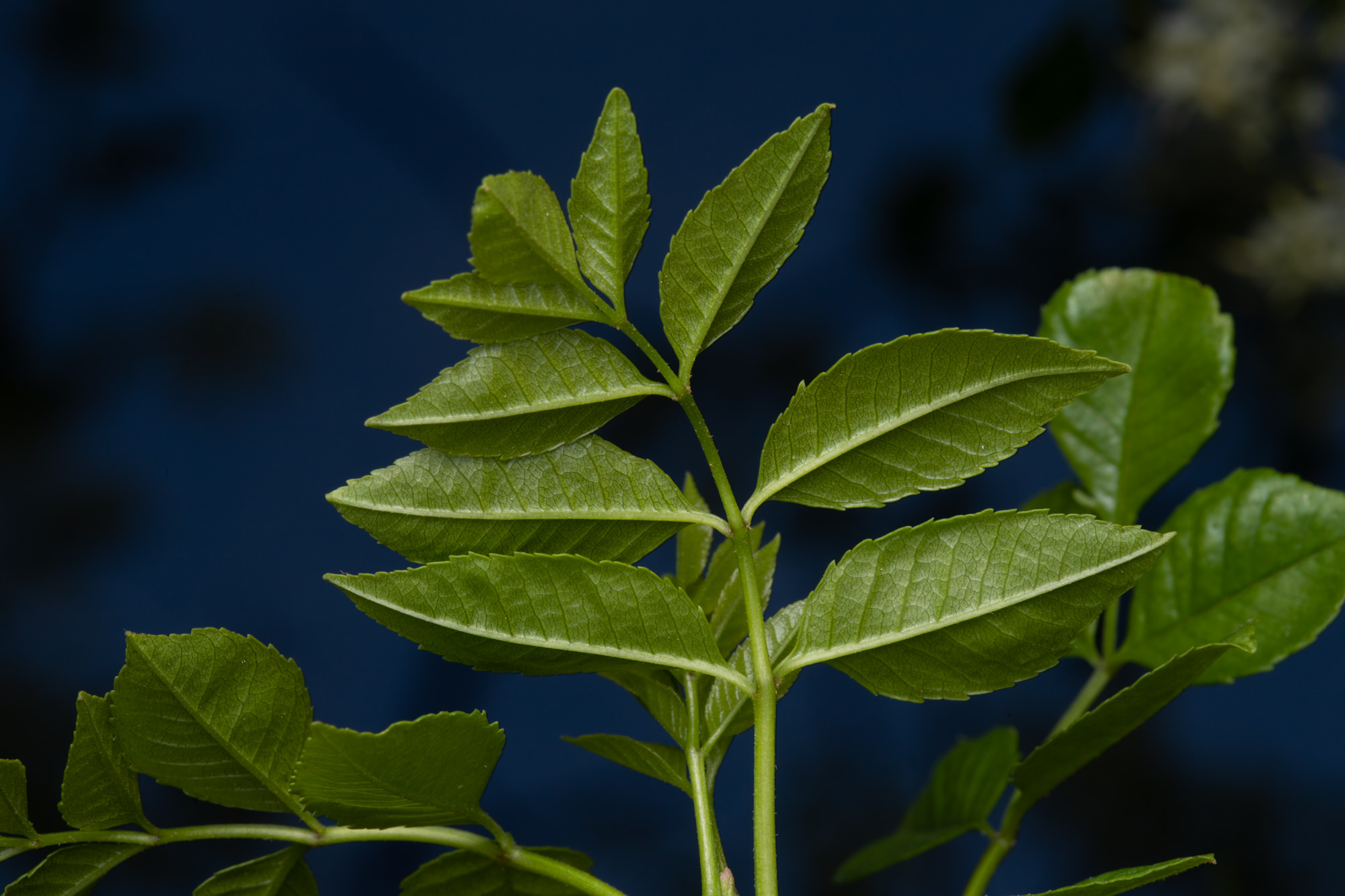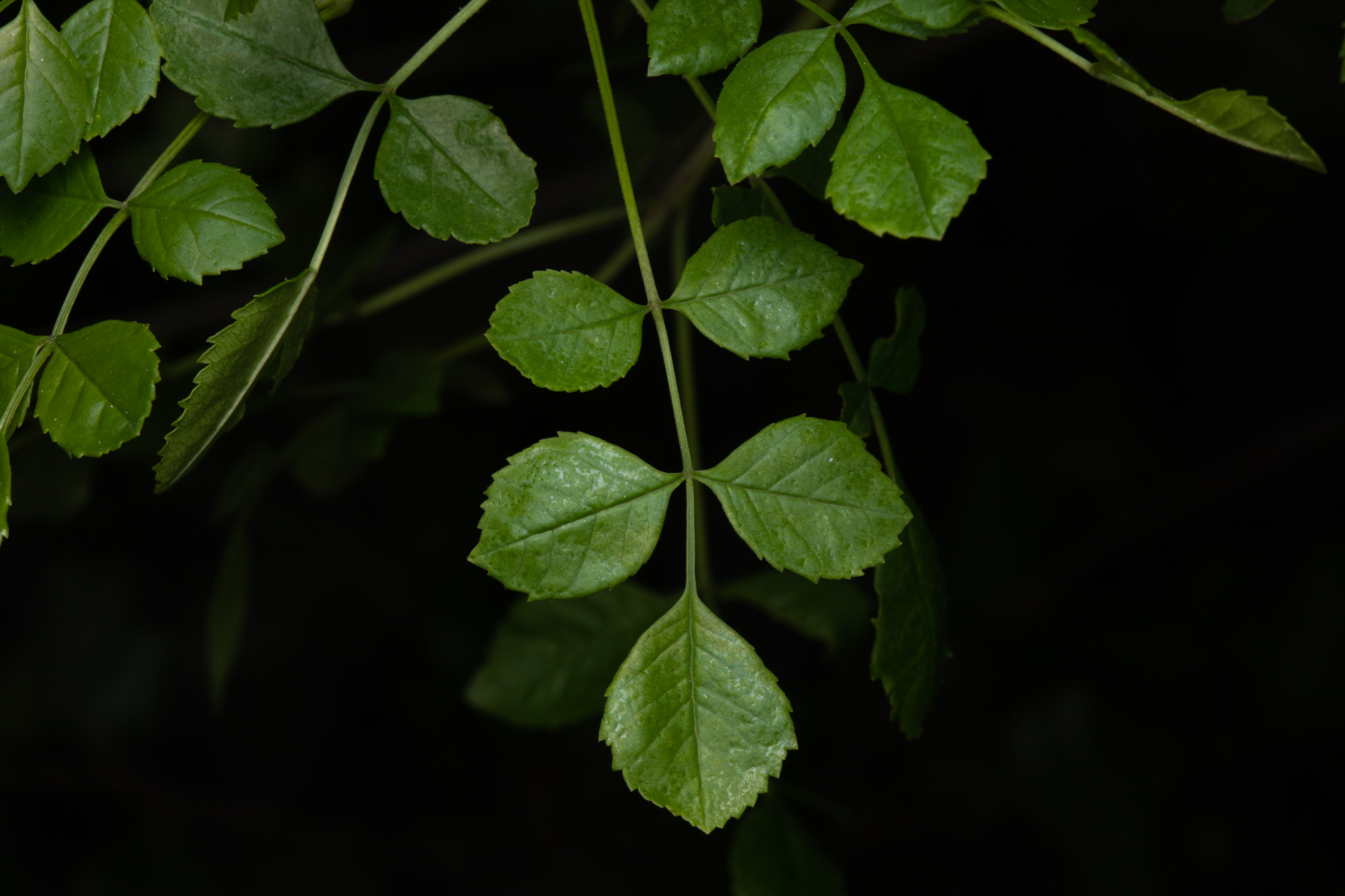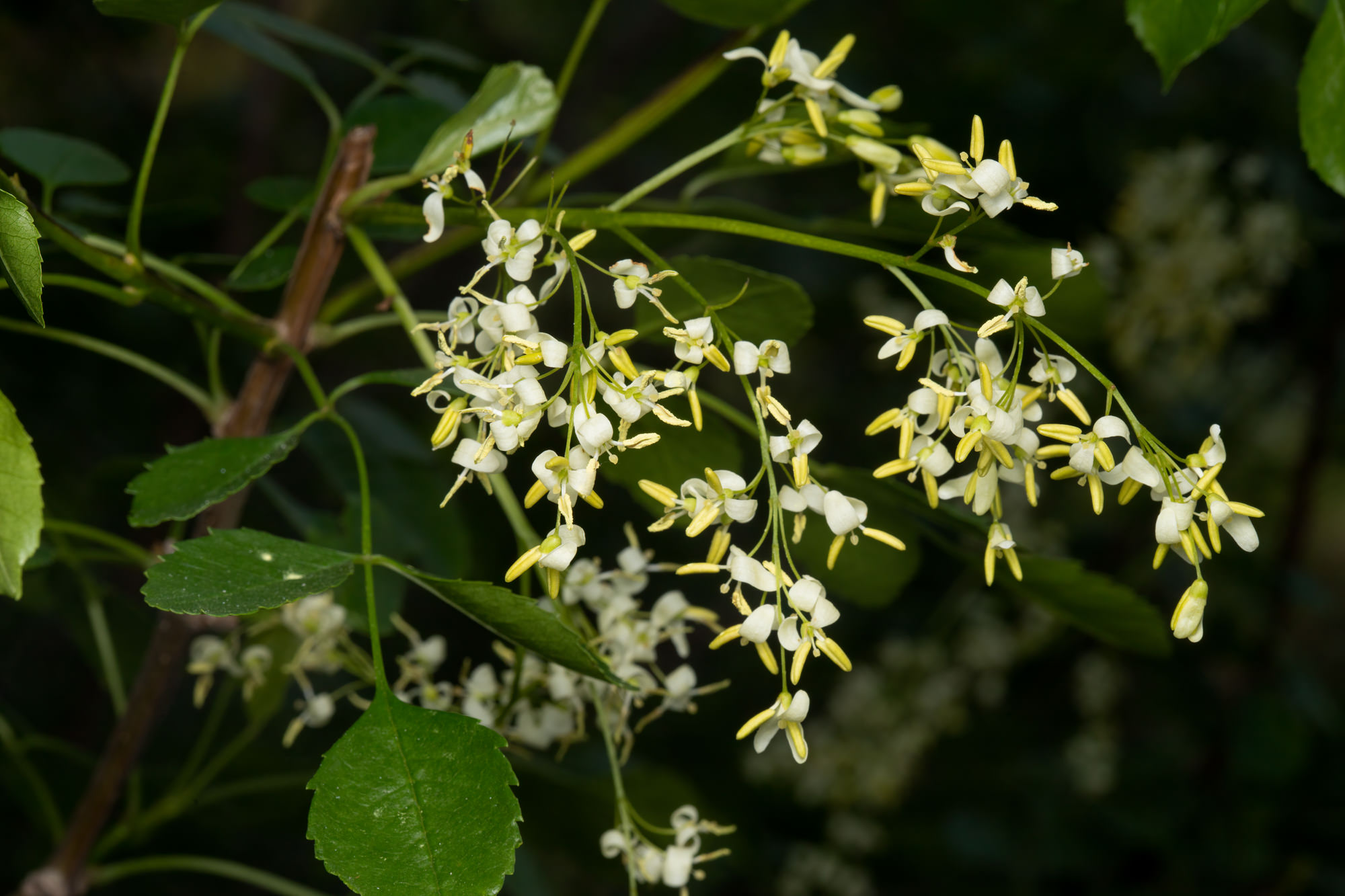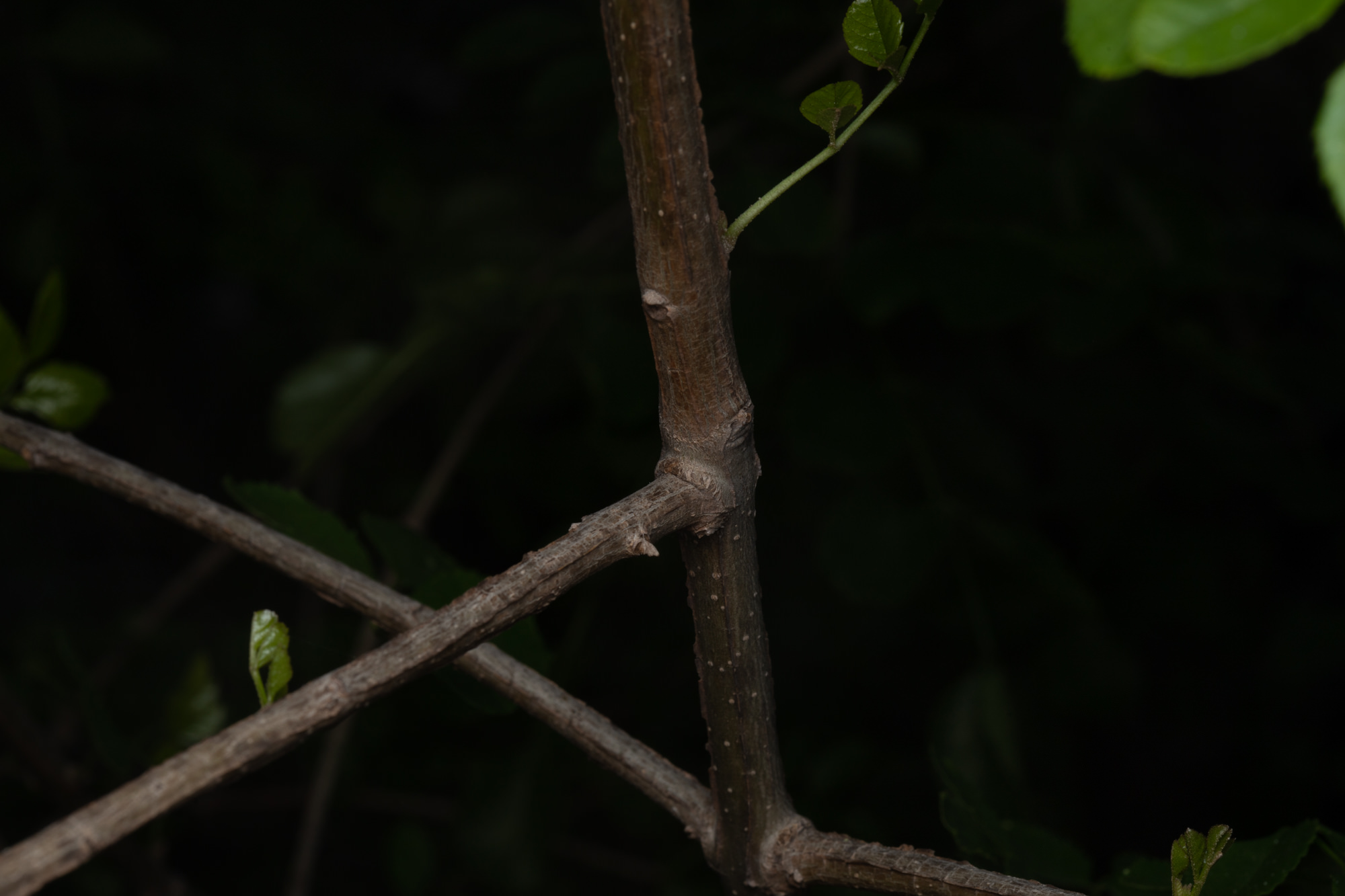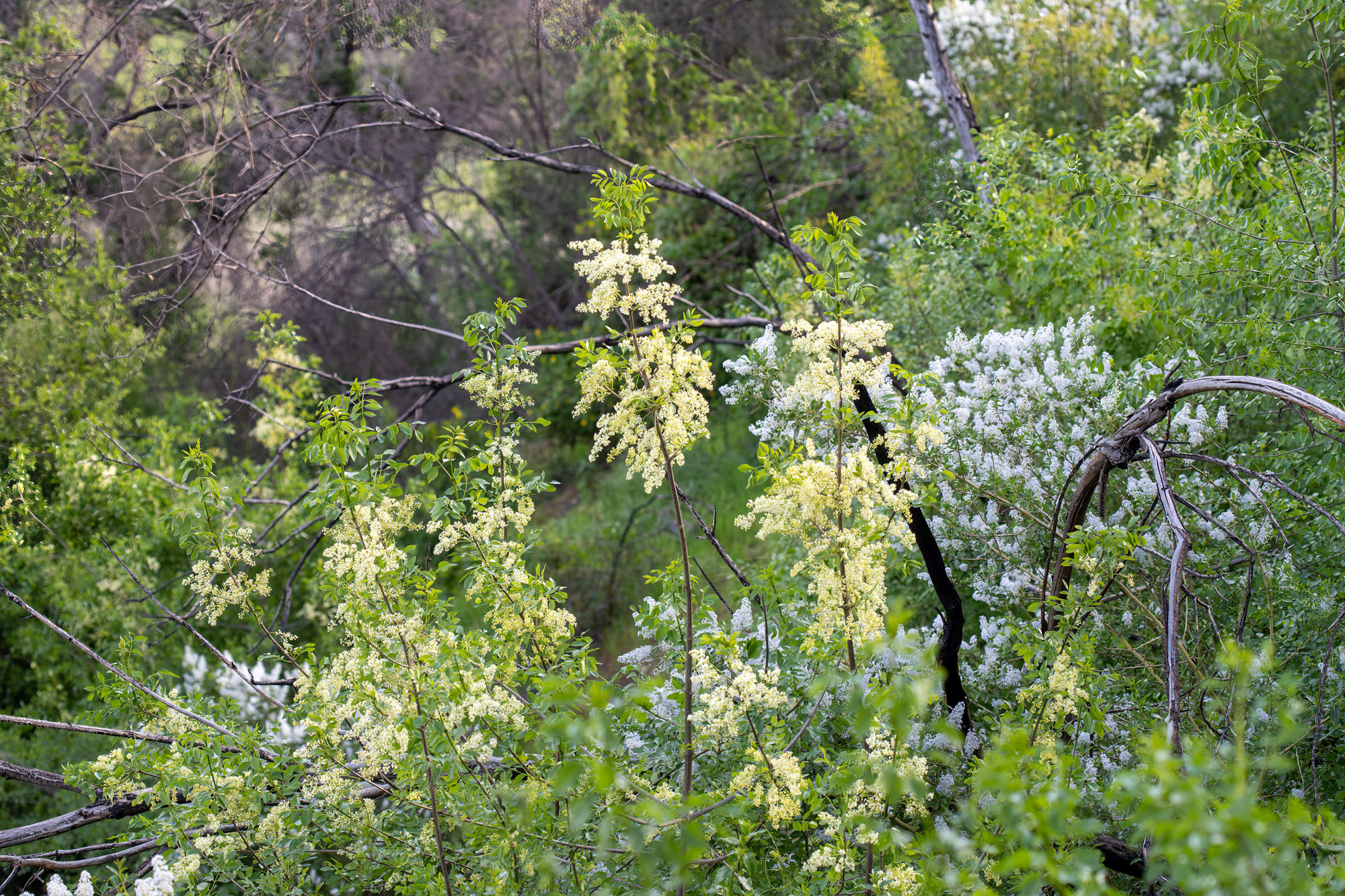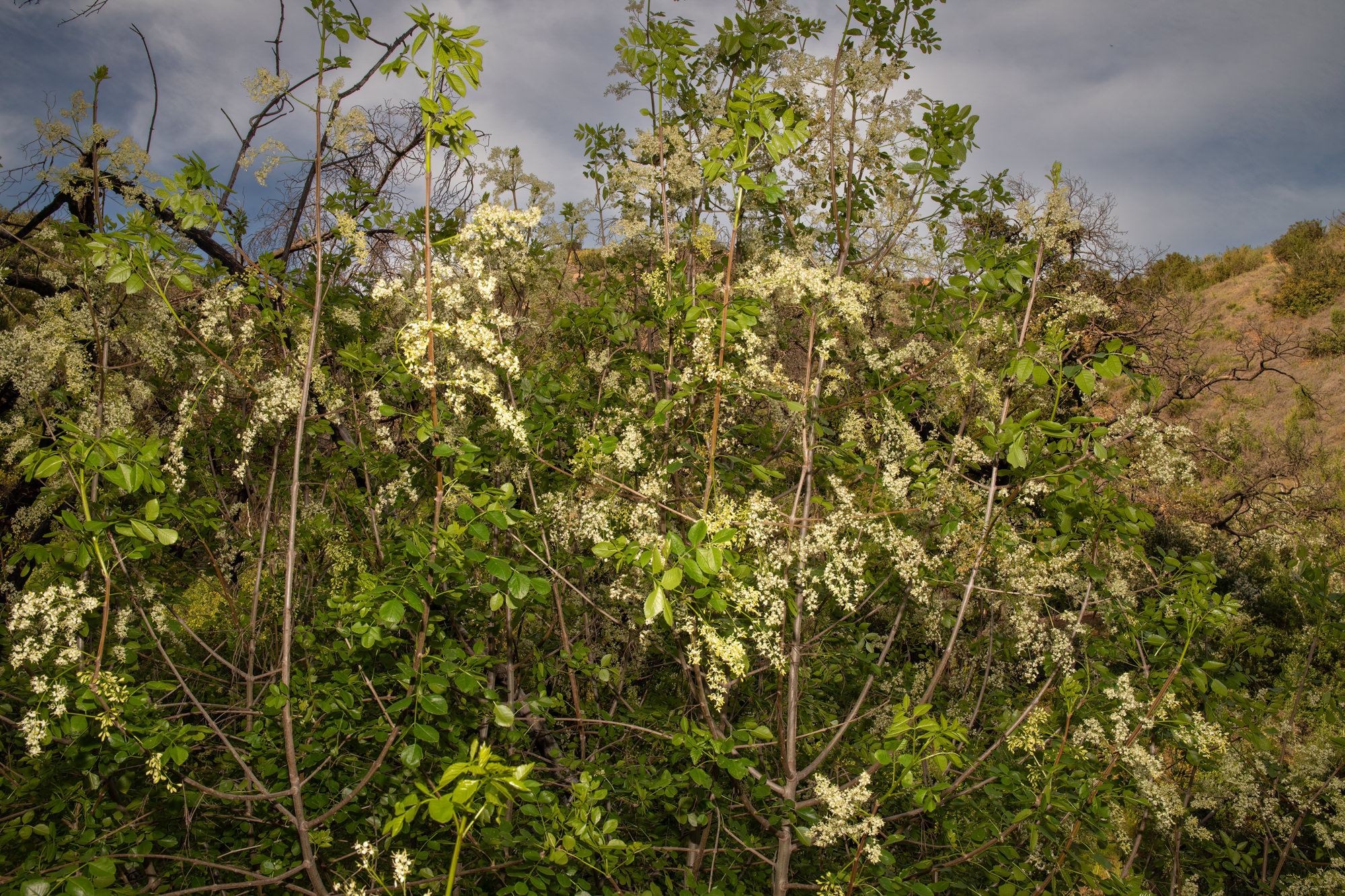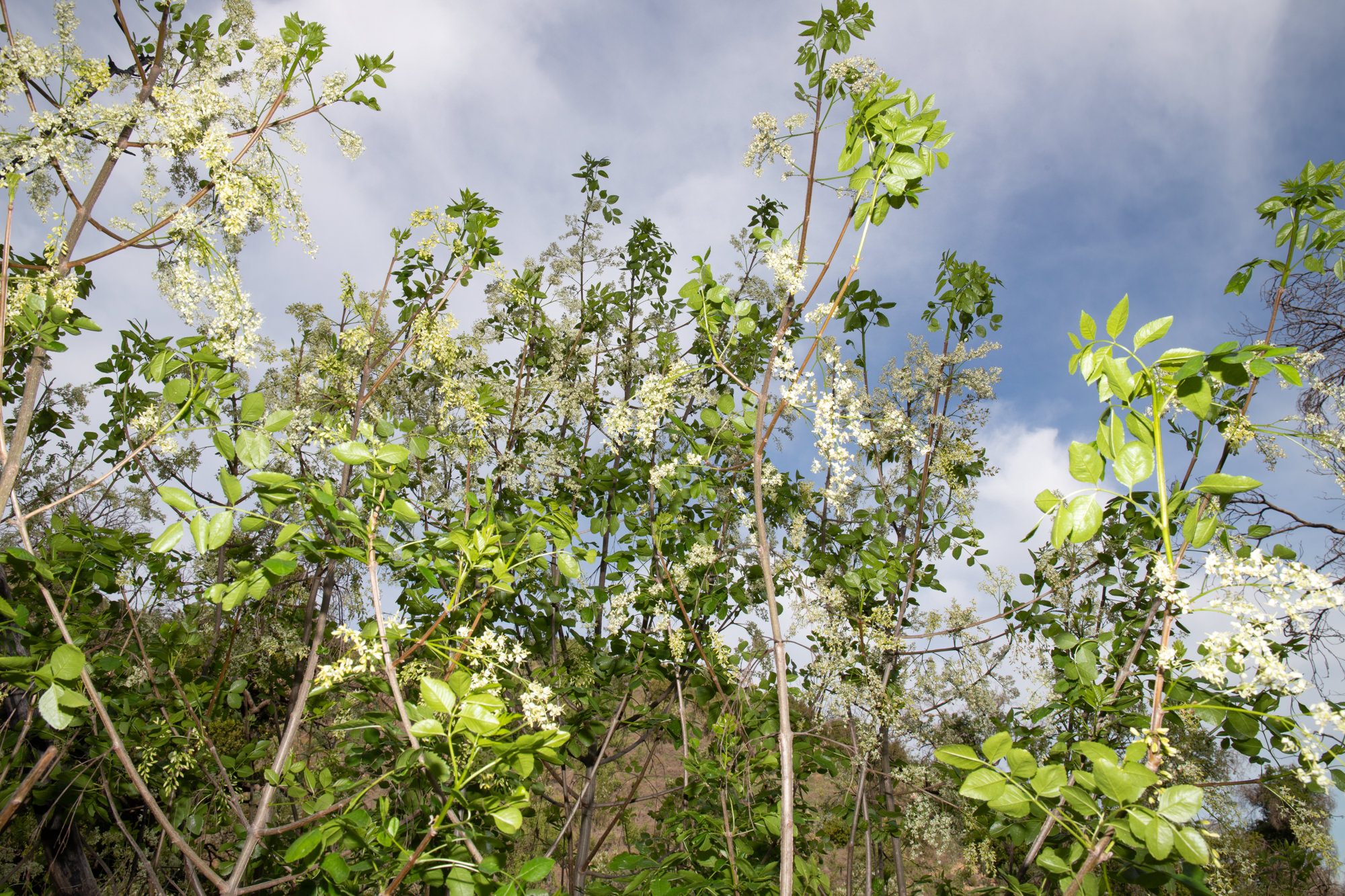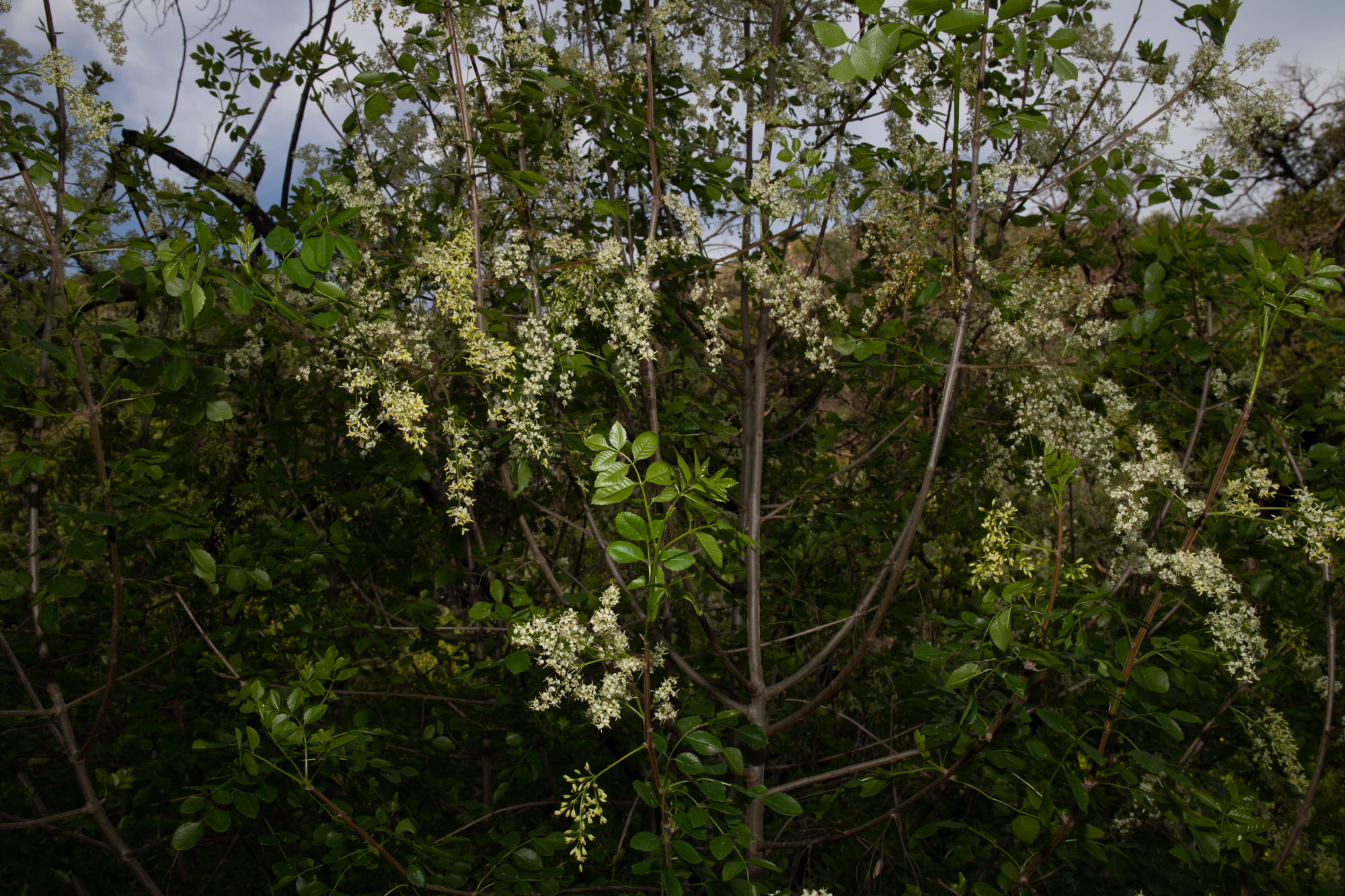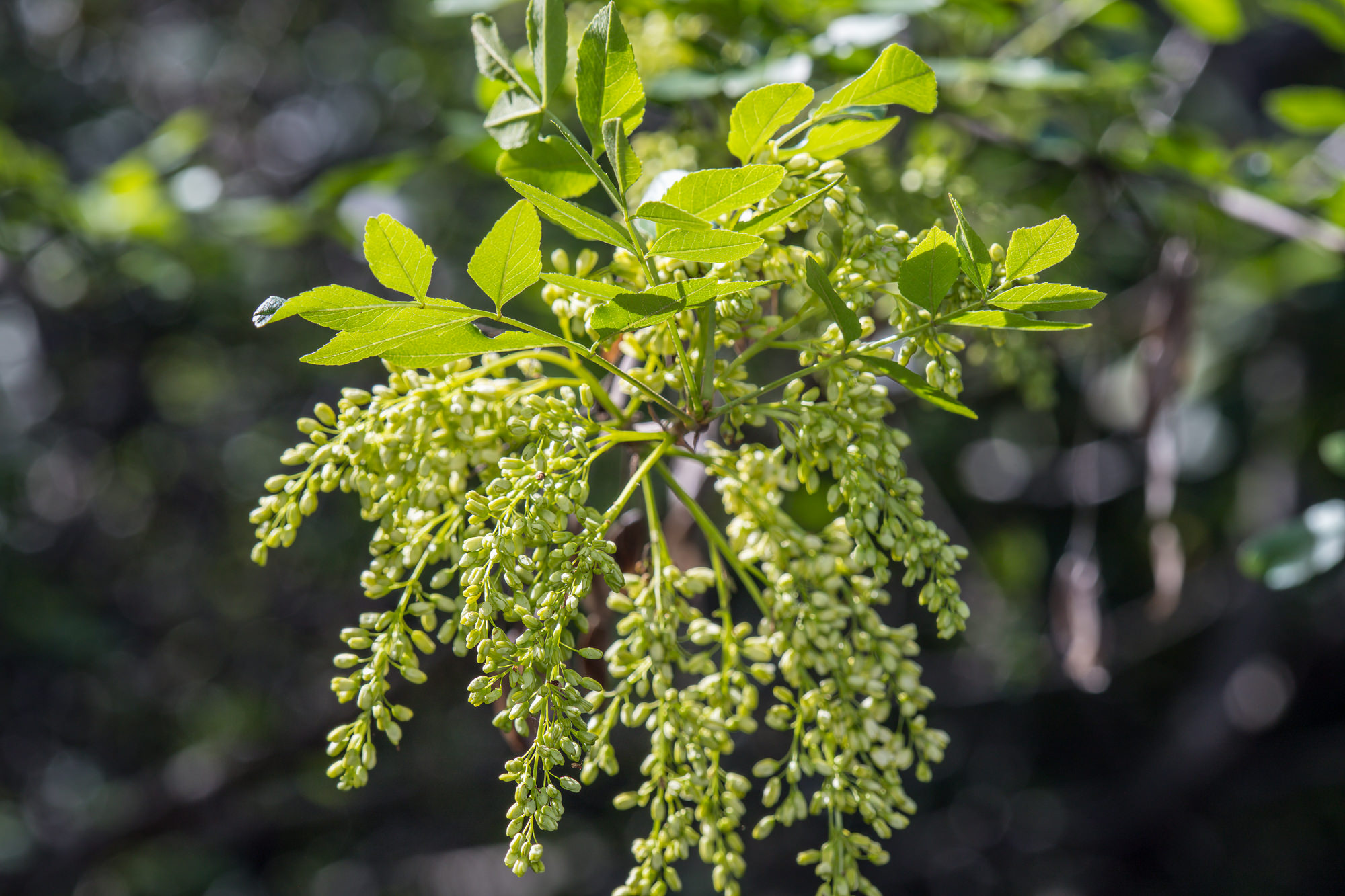Flowering Ash
- Fraxinus dipetala
| Common Name(s): | Flowering Ash |
| Scientific Name: | Fraxinus dipetala |
| Family: | Oleaceae (Olive) |
| Plant Type: | Shrub or Tree |
| Size: | 20 feet |
| Habitat: | Woodland, Chaparral |
| Blooms: | March to May |
| Fire Response: | Germinate from Seed |
Chaparral Flowering Ash - Fraxinus dipetala - is native to California and can also be found in Arizona, Nevada, Utah and northern Baja California. This shrub/tree has a preference for north facing slopes at elevations from 300 to 4,300 feet. Flowering ash is not rare but it can blend in well with others and is easily overlooked. Our local mountains host this plant at a couple of locations (all photos for this page were taken at Malibu Creek State Park or Cold Creek Preserve).
Blooming from March to June, California Ash (Fraxinus dipetala) is a species of ash in the Oleaceae (Olive) family. The plant can appear like a shrub or a small tree (reaching heights of 20 or more feet).
Fraxinus dipetala has opposite, pinnately compound leaves (typically 3-7 leaflets per group) that lack hairs (glabrous is the correct term). Leaf size varies from 3/4 to 6 in. long and vary from egg-shaped to round. Serrate margins connecting to stalks on short petioles.
The flowers have two white lobe-shaped petals (dipetala is in the name) and are sweetly scented, hanging in clusters. Different from other ash species, the California Ash is bisexual (each flower has male and female parts, not dioecious (separate male and female parts).
Link to Calflora.net - the best source of this fascinating information.
Name Origin: Fraxinus — Frax'inus: a classical name for the ash genus. Wikipedia says that the name originated in Latin from a Proto-Indo-European (PIE) word for birch, and that word is also used to mean "spear" in their respective languages, as the wood is good for shafts. The genus Fraxinus was published by Carl Linnaeus in 1753.
dipetala — having two petals
Contributed by George Sherman
Last modified: August 21 2024 15:18:51.
Number of Images: 16
Image Size Total: 9,594,173
References:
Wildflowers of the Santa Monica Mountains, by Milt McAuleyFlowering Plants: The Santa Monica Mountains, Coastal and Chaparral Regions of Southern California, by Nancy Dale
Chumash Ethnobotany: Plant Knowledge Among the Chumash People, by Jan Timbrook
Leaf Shapes Primer - Botanical Terms for Leaves: - Link

